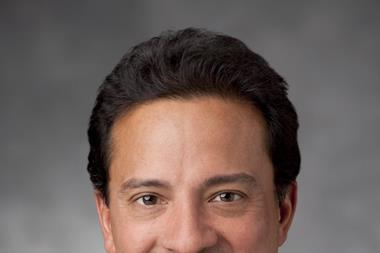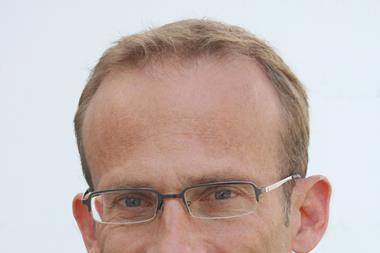As the financial squeeze continues and the market hardens, many parent companies will look to get more from their captives
W ith Solvency II around the corner and a spate of natural catastrophes suggesting an end to the soft insurance market, the captive industry finds itself at a crossroads.
Captive growth, in Europe and other parts of the world, has been relatively constrained since the beginning of the financial crisis in 2007. The combination of a soft general insurance market and regulatory uncertainty created a level of stagnancy in the market. Yet despite the slow rate of captive formations, there has been a move towards greater risk retention.
Existing captives have been an obvious beneficiary of that greater retention. According to Marsh’s 2011 Captive Benchmarking Report: “In a period when the (re)insurance markets continued to soften, and when many organisations struggled just to keep afloat, the annual average GWP [gross written premium] for captives within our sample groups showed significant levels of increase.”
These increases were, perhaps unsurprisingly, most pronounced for the class of business where capacity in the traditional market contracted and rates hardened, namely for financial institutions. But captives for retail and consumer products also showed big increases. Construction and transportation were the only sectors that did not follow this trend.
‘New generation’ captives in Continental Europe – those formed between 2002 and 2005 – have seen some of the most marked increases in premium. By looking at the ratio between GWP and owner’s equity as a measure of how effectively captives are working their capital, it is clear this group has the edge, notes Marsh. "Our expectation would be to see higher levels of premium income to capital for the younger group of captives.”
Multi-line approach
Many parent companies are putting their captives to greater use. The financial crisis has put pressure on corporate financial directors to cut costs and gain greater efficiencies and captive insurers have not been immune from this enhanced scrutiny. As a result, many are now seeing their remit expanded.
Manager of global insurance at Heineken Eric Bloem explains how the group has extended its product line, having initially begun with property. The organisation’s captive, Roeminck NV, underwrites property, liability, marine and motor fleet, and is looking to further extend its service to two or three more classes. The aim is to underwrite a multi-line programme within the EU consisting of five lines of business.
As well as typically underwriting more risk on behalf of the parent, the captives of many European corporates – such as Heineken – are writing more diverse books of business. Very little is beyond the remit of a captive, explains Willis Captive Practice’s chief marketing officer, Dominic Wheatley. Typically, it is only during very soft markets – where a tactical decision is made to purchase from the commercial market, or where covers cannot be put through a captive for technical reasons – that a captive owner may look elsewhere.
“The trend is towards a broader range of risks being written by captives,” Wheatley says. “Traditionally, if you go back to the foundations of the captive industry, it would have been writing deductibles on fairly conventional covers like liabilities, property and so on. Now the captive programmes are involved in a much more diverse range of risks.”
By underwriting a diverse book of business, captive insurers should be able to make better use of their capital. Because short-tail lines of business, such as property insurance, are typically not correlated to longer-tail lines such as medical malpractice, they should create a diversifying effect by being grouped together. The better diversified a book of business – both in lines of business and geography – the more business a captive can underwrite without increasing its capital requirements.
But part of the reason parent companies are more comfortable with greater risk retention is down to an increased capability in modelling and analytics, thinks Wheatley. “There is a wider trend whereby companies are looking strategically at their retentions across the whole of their business, using often sophisticated analytics.” They then use their captive to co-ordinate and finance the retention on a global scale.
One area that continues to be discussed is the use of captives for employee benefits (such as pensions or health insurance). While employee benefit captives have been a relatively slow burner, the concept is gaining traction. Onshore in the USA, the use of a captive for third-party business such as employee benefits can bring tax advantages as well as offering the all-important diversifying effect. For a volatile area like healthcare, self-insurance also provides greater long-term stability.
And there are compelling reasons for European captive owners. “The issues with pensions over the last three years have really changed the focus on employee benefits and how they’re viewed in the organisation,” explains Kane Group director Clive James. “Rather than being a purely HR issue, it’s become more of an insurance spend issue. As a consequence, I think over time more and more employee benefits will move into captives. It’s not going to be overnight but I’d expect the growth to be fairly consistent year on year.” SR
Outlook for captives
Looking ahead, Solvency II will continue to shape the European captive scene over the next two years as parent companies reassess their self-insurance arrangements. Heineken's Bloem does not think Solvency II will change the role of the captive as it is a "very efficient and powerful tool".
But regulatory capital requirements could increase three- or four-fold for EU-based captives and overall the situation is likely to favour larger, more diversified captive organisations.
"Some parent companies will have to reassess their captives' roles, consider innovative structures such as protected cells, or ultimately plot their exit strategies," predicts AM Best in a recent report.
"In a few cases, where EU admissibility is not an
issue, redomiciling to a third country may be a short-term option."
These regulatory challenges come at a time of change in the general insurance market. The Japanese earthquake together with other recent catastrophes should spell an end to the softening market for property catastrophe reinsurance. This could reinvigorate captive formations despite Solvency II.
Downloads
Risk Financing
PDF, Size 0.82 mb



















